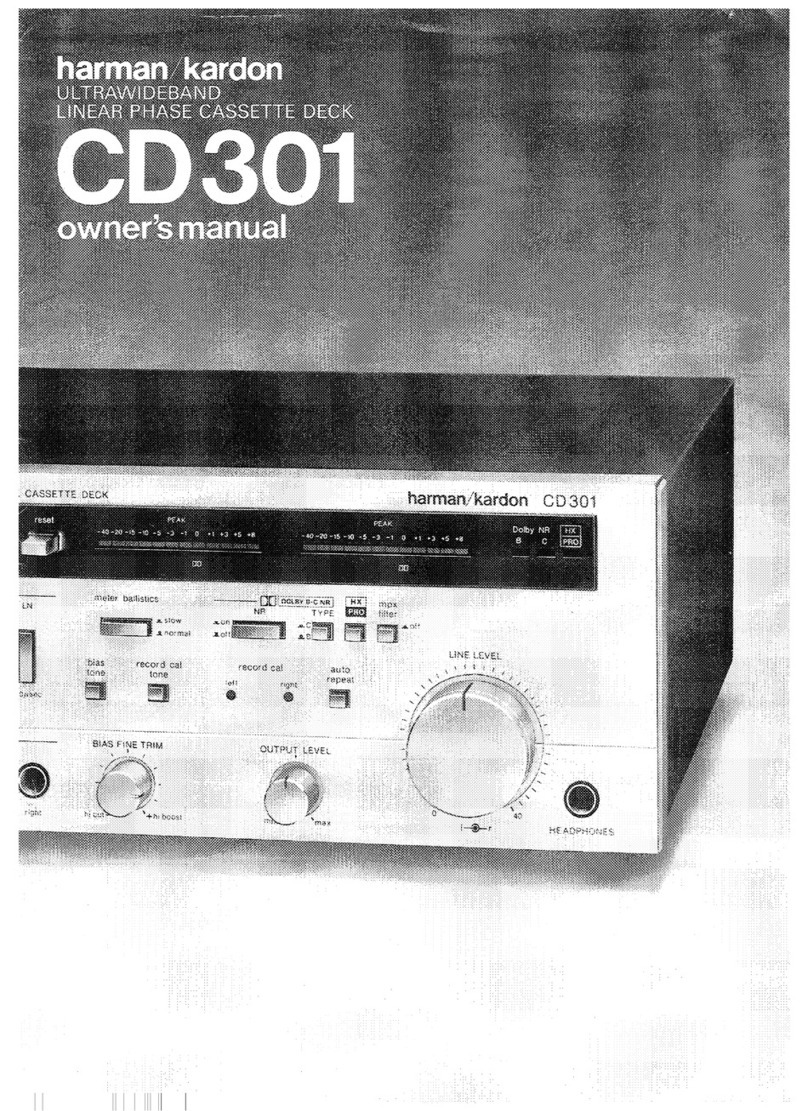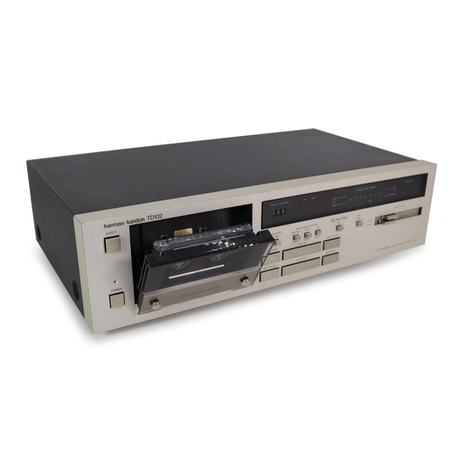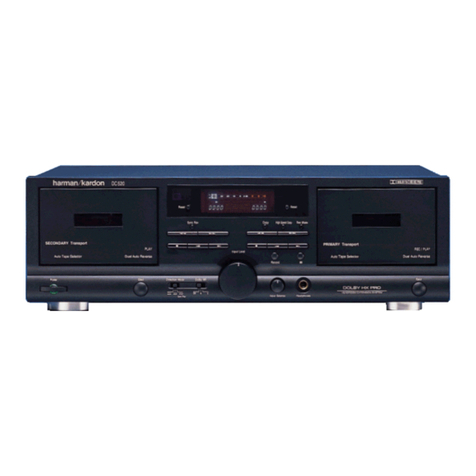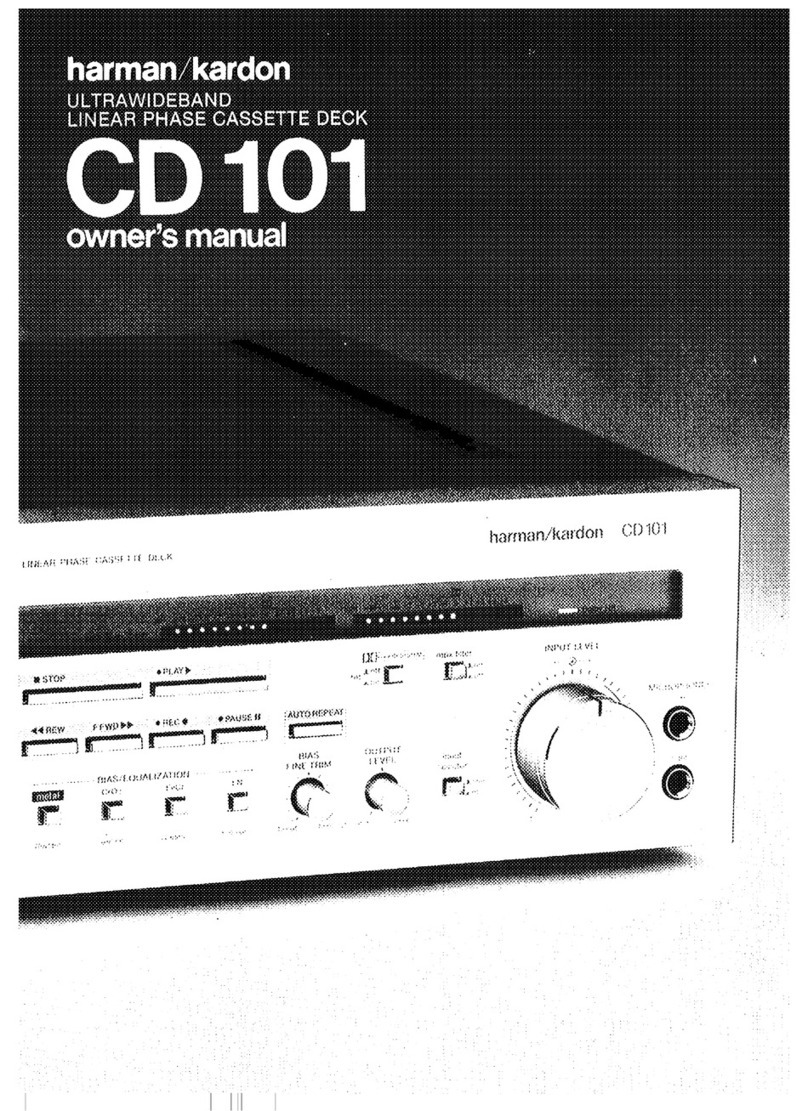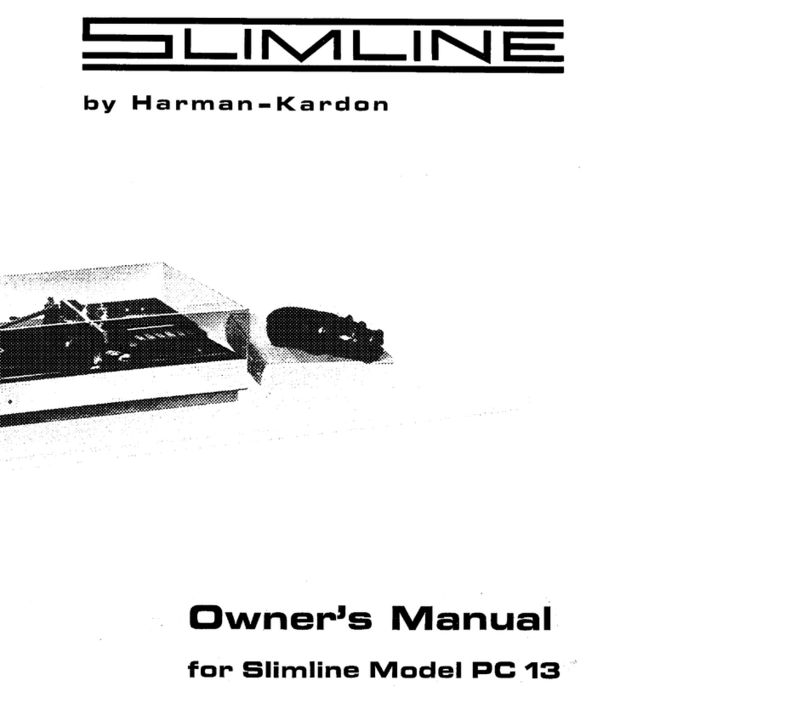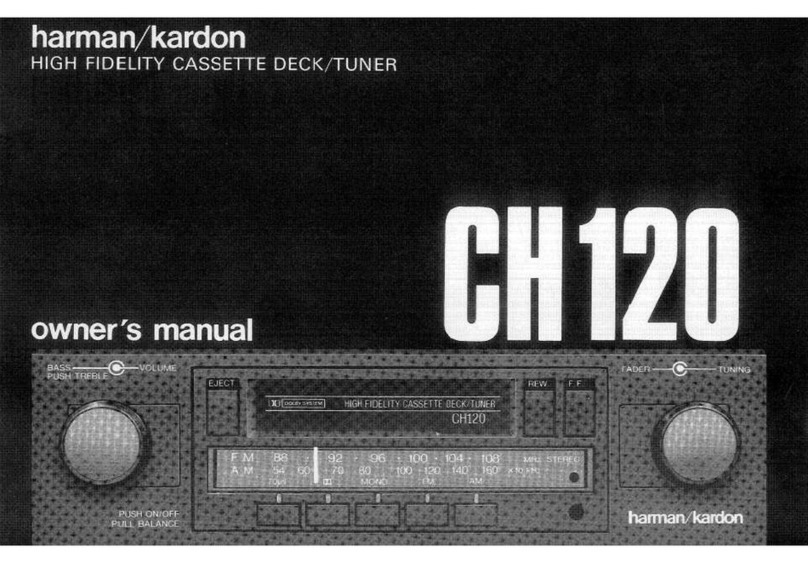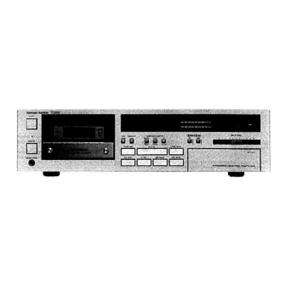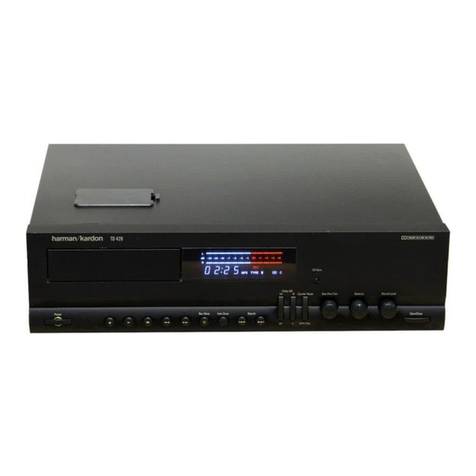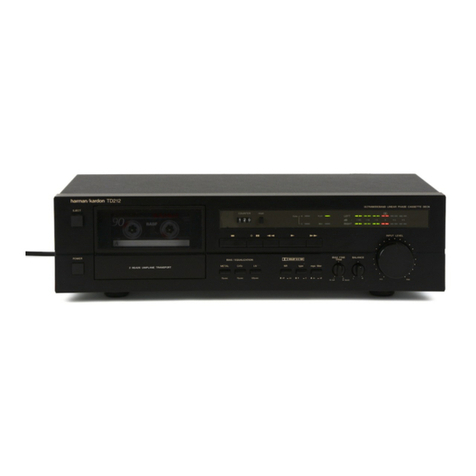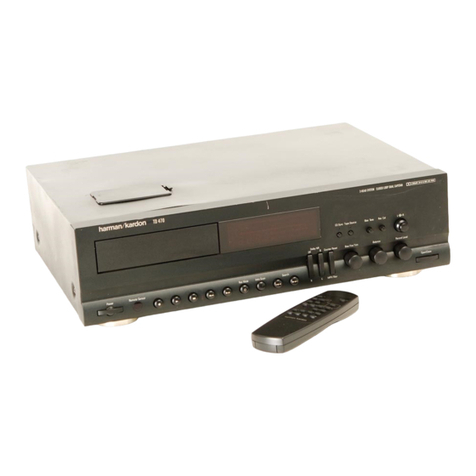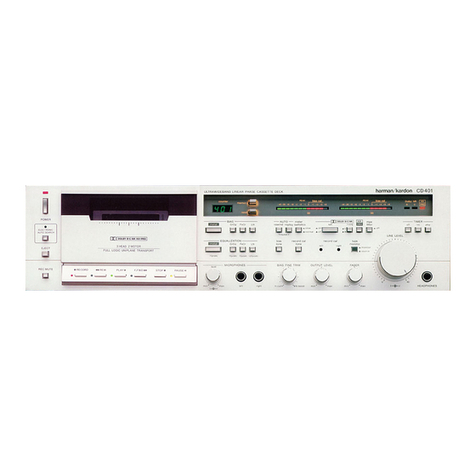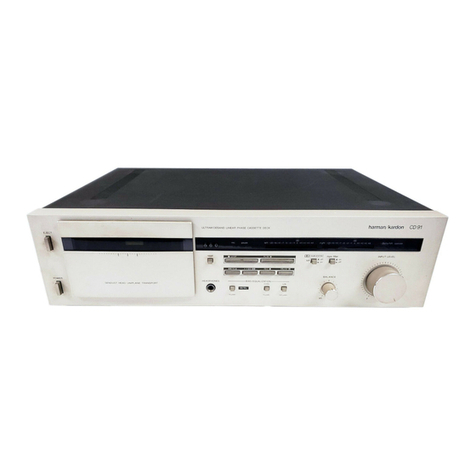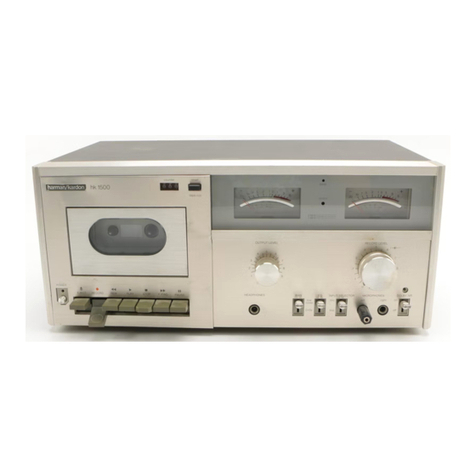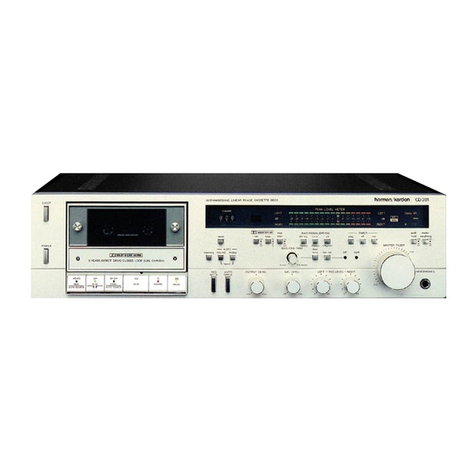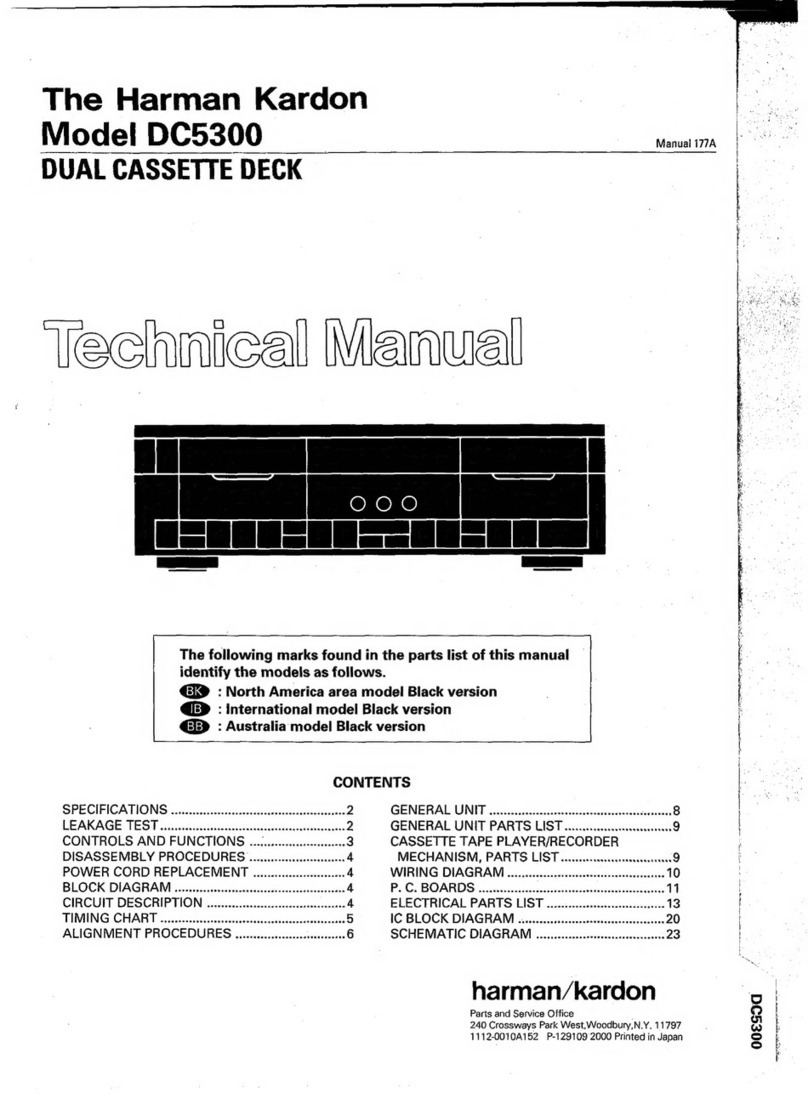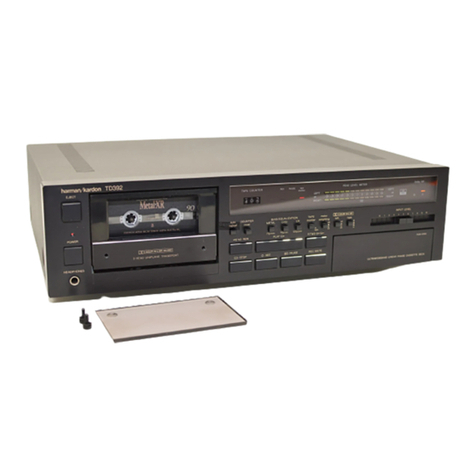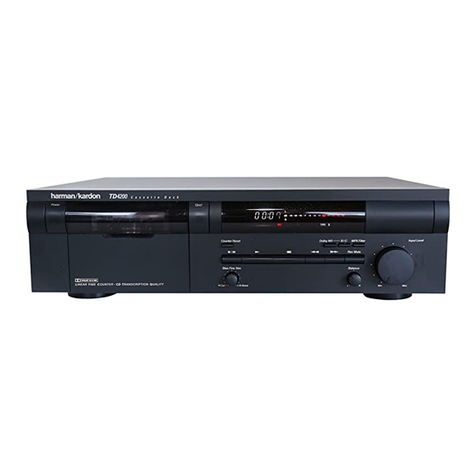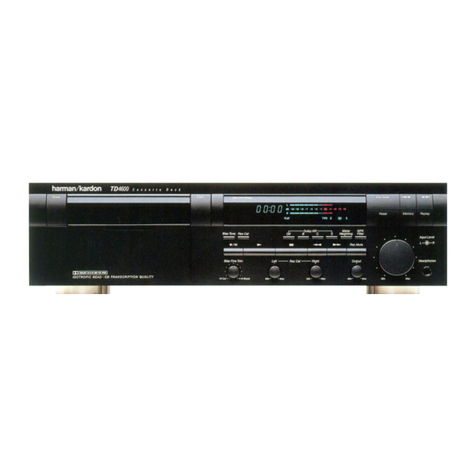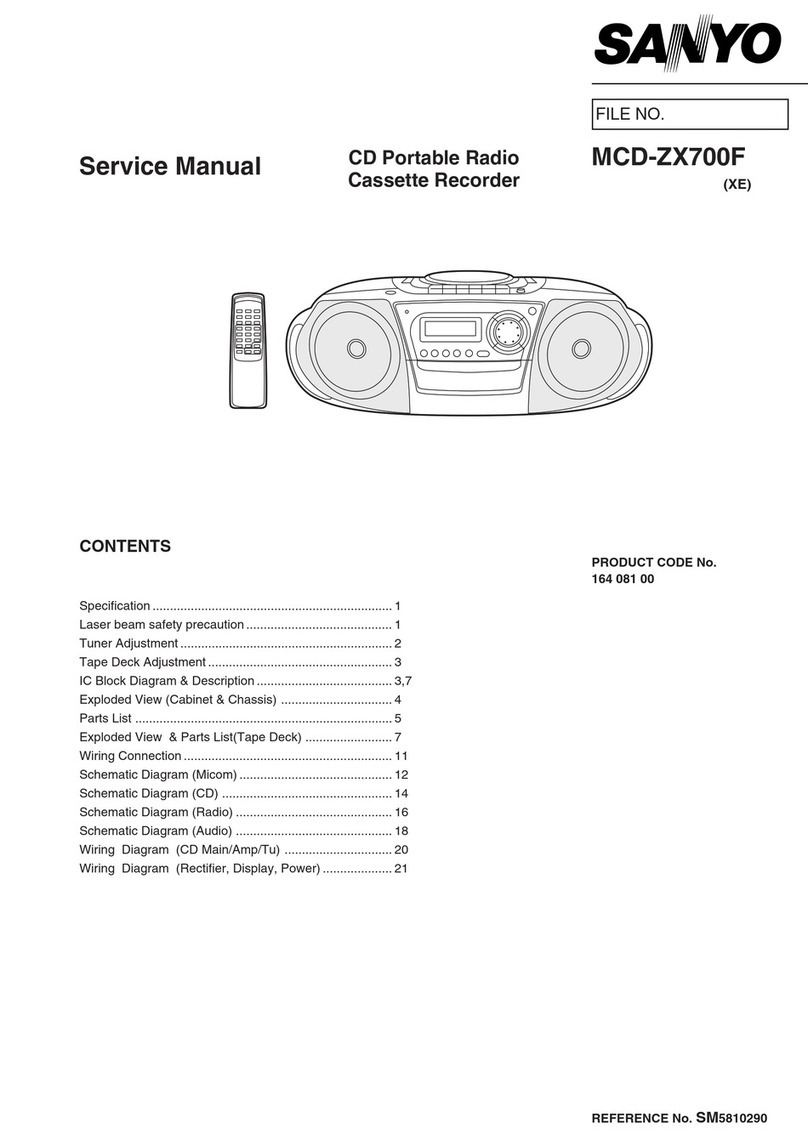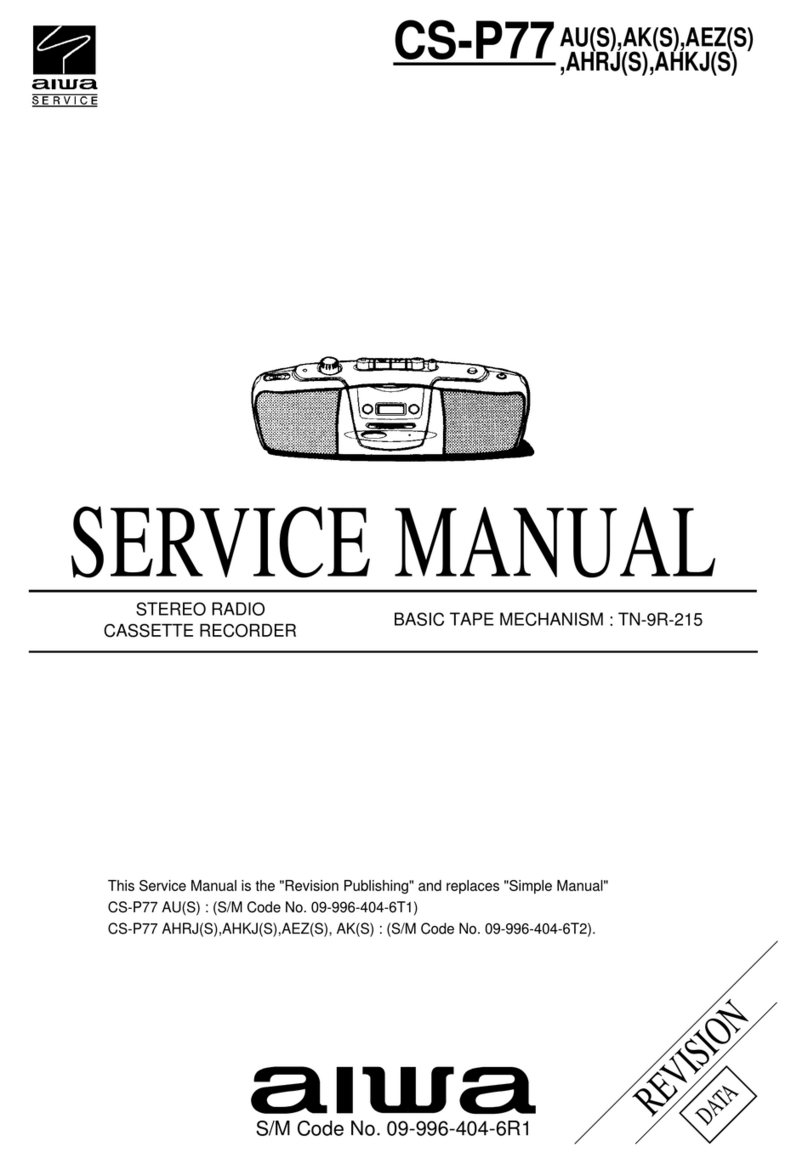
6
CIRCUIT DESCRIPTION
PLAYBACK SIGNAL
Signals that are retrieved by the playback head are amplified by
playback amplifiers 0101, 0103, 0105, 0107, 0109, and 0111 (L
ch) and 0102, 0104, 0106, 0108, 0110, and 0112
(R
ch). Then,
they are divided into Dolby NR B/C
and
Dolby
NR
S types,
and
sent to the Dolby
NR
circuit where they are decoded. Signals are
sent to the peak level meter circuit via the switching IC502,
and
their levels are controled by the output level controller from which
they are sent to the output jack. The level controlled signals are
simultaneously sent
to
the headphone amplifier
IC651
where they
are amplified before being sent
to
the headphone jack.
RECORD SIGNAL
Signals that reach the input jack are level controlled by the input
level controller. Then, they are divided into recording and record
monitoring signals
and
sent to the Dolby NR circuit. After being
encoded in the Dolby NR circuit, the recording signals are
switched by the switching
IC501
and sent to the equalizer circuit
via the Rec Cal controller. The record monitoring signals are
decoded by the Dolby
NR
circuit
and
then processed
in
the same
manner as the playing signals. After the equalizer circuit, the
recording signals are amplified by a recording amplifier consisting
of 0209, 0211,
0213,
0215, and
0217
(L ch)
and
0210, 0212,
0214, 0216,
and
0218
(R ch) before being sent
to
the recording
head.
DOLBY NR CIRCUIT
The Dolby NR circuit has two blocks, one for processing the
playing signals and another for processing the recording signals.
The
block for the playing signals also decodes the record
monitoring signals.
Playing signals processing block
• Dolby NR B/C type
The playing signals are supplied to pin 29
(L
ch)
and
pin 2
(R
ch)
of IC551. After decoding, they are sent
to
pin 25 (L ch)
and
pin 6
(Reh).
The record monitoring signals are supplied
to
pin 30 (L ch) and pin
1
(R
ch) of the
IC551
for decoding.
• Dolby NR stype
The playing signals are supplied to pin
41
of
the IC603 (L ch)
and
IC803 (R ch). They are supplied from pin 37 to pin 2 for low
frequency (LF) processing, and sent out from
pin
43.
At the same
time, they are supplied to pin 2 of the IC607 (L ch)
and
IC807
(R
ch) via the IC606 (L ch) and IC806
(R
ch) for high frequency (HF)
processing. The processed signals are sent out from pin
43
of
these ICs. Signals after
LF
and
HF
processing
are
supplied to pin
2 of the IC605
(L
ch)
and
IC805
(R
ch) via the
IC601
and IC604 (L
ch) and
IC801
and IC804
(R
ch) for low level (LL) processing. The
processed signals
are
sent out from pin
43
to pin 35 of the IC603
(L ch) and IC803
(R
ch). Then, they are supplied from pin 34 to pin
39. Finally, they are supplied from pin
37
as
playing signals.
Recording signals processing block
• Dolby NR B/C type
The recording signals are supplied to pin 30
(L
ch) and pin 1
(R
ch) of the
IC501
in the Dolby
NR
circuit. After encoding, they are
sent out from pin
18
(L ch) and pin
13
(R
ch).
• Dolby NR stype
The recording signals are supplied
to
pin
40
of the IC103
(L
ch)
and IC303
(R
ch). They are sent out from
pin
37
to
pin 2 for low
frequency
(LF)
processing. At the same time, they are supplied
to
pin 2 of the IC107 (L ch) and IC307 (R ch) via the IC106
(L
ch)
and
IC306
(R
ch) for high frequency (HF) processing. After
LF
and
HF
processing, the signals are supplied from pin
43
to
pin 2
of
the
IC105 (L ch) and IC305 (R ch) via the
IC101
and IC104 (L ch)
and
IC301
and IC304
(R
ch) for low level (LL) processing. Then, they
are supplied from pin
43
to pin 35 of the IC103 (L ch) and IC303
(R
ch). Finally, they are supplied from pin 34 as recording signals.
MUTING OPERATION
The signal
that
mutes the sound produced
at
switching to
recording or playback
is
applied from
IC901
of the logic control
block.
When the "STOP" button
is
pressed, the mute signal output from
the pin 28 of
IC901
turns
ON
0701 (L ch.) and
0702
(R
ch.) to
short-circuit the output signals
of
the playback amplifiers for
muting. For the purpose of preventing generation of noise at
power ON/OFF, the mute signal is output from 051. The muting
is
done by short circuiting the output signal with 0701
(L
ch.)
and
0702
(R
ch.) turned
ON.
LOGIC FOR RECORD MODE
Pressing the "REC" button puts pin 27 of the
IC901
in the "high"
level. This causes the
0709
and
0711 (L ch) and
0710
and
0712"
(R
ch) to go
on
muting signals reaching the Dolby NR circuit.
Since the
0219
goes off at the same time, the
0207
(L
ch)
and
0208
(R
ch) are turned off. This cancels muting of the signals
going to the recording amplifier so that the recording signals are
allowed
to
reach the recording head.
SWITCHING FROM RECORD MODE TO PLAYBACK MODE IN
LOGIC
When the "STOP", "PAUSE"
or
"PLAY" button
is
pressed, the
pin
26
of
IC901
becomes high level.
0219
turns ON and
0207
(L ch.),
0208
(R
ch.) turn
ON
to mute the inputs
to
the record amplifiers.
C
